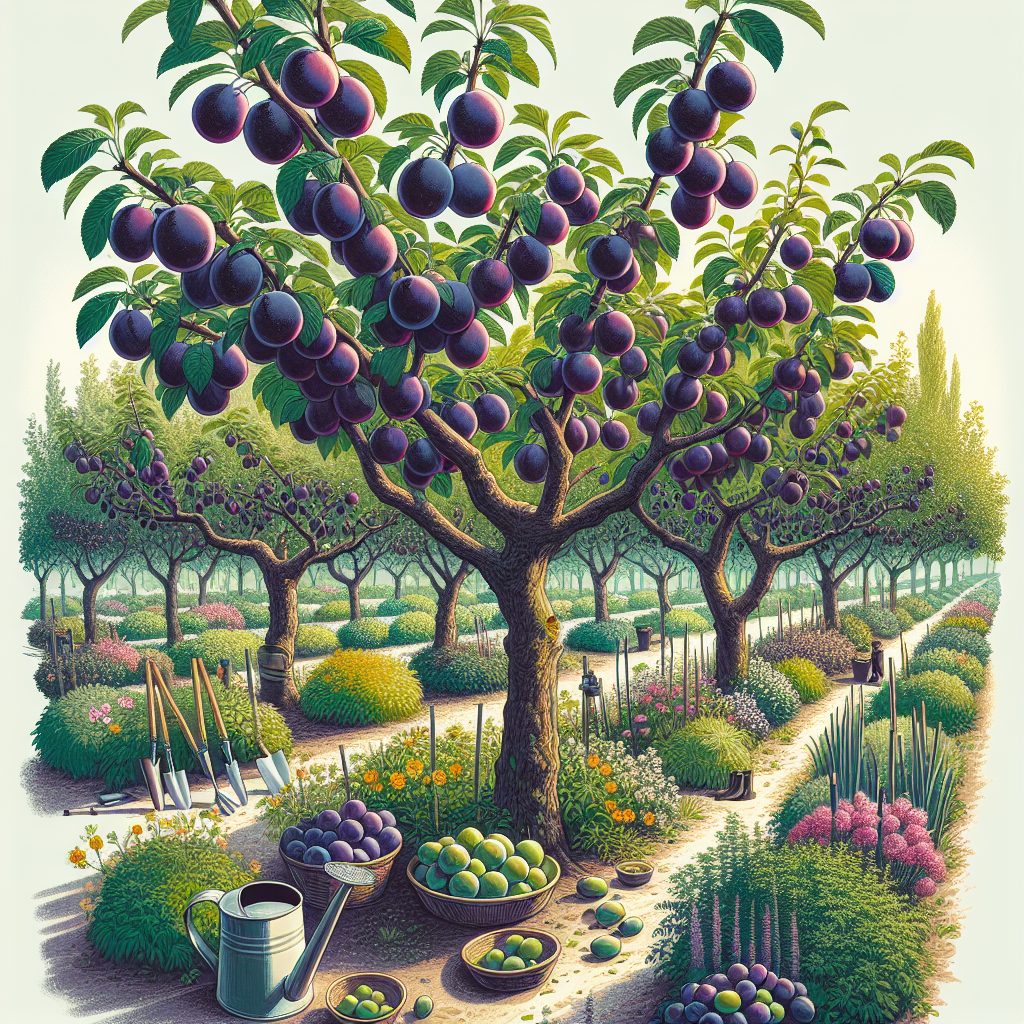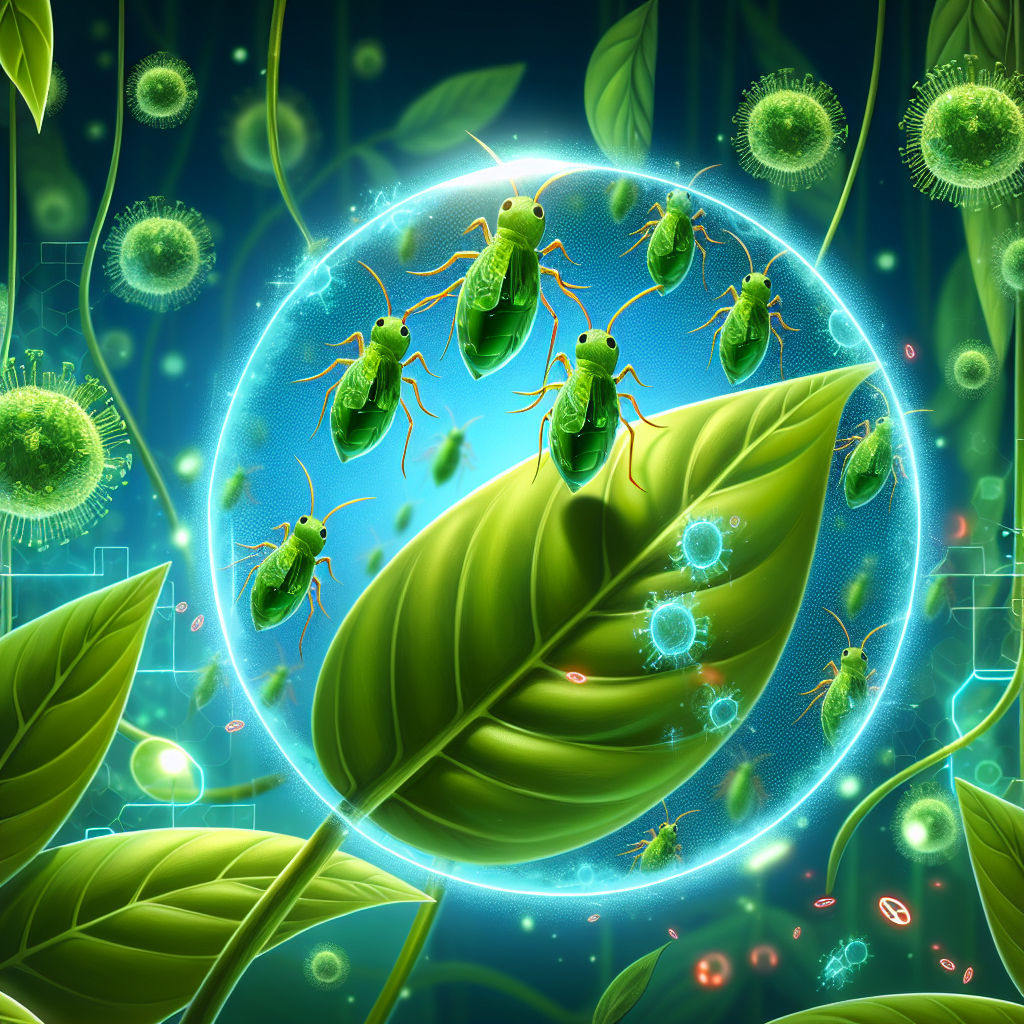How to Protect Your Apple Trees from Codling Moths
Updated July 26, 2024 at 9:20 am
Discover effective strategies to safeguard your apple orchard against the invasive codling moth, whose larvae can wreak havoc on fruit quality. This article provides essential tips to identify, prevent, and control these pests for a bountiful, healthy harvest.

Understanding Codling Moth Infestations in Apple Trees
If you’re growing apple trees, you might be battling the infamous codling moth. These pests are the bane of apple growers everywhere. A codling moth infestation can decimate your crop, turning what should be crisp, delicious apples into wormy, inedible disappointments.
Identifying Signs of Codling Moth Damage
Spotting the telltale signs of codling moth damage is crucial. You’ll typically see small, brown entry holes on the fruit, often with frass (moth larvae excrement) around the opening. Getting to know the enemy’s tactics will help you protect your apple trees more effectively.
Integrated Pest Management Strategies
Integrated Pest Management (IPM) is a holistic approach to pest control. It combines cultural practices, biological control, and chemical applications to decrease the codling moth population in your orchard without causing undue harm to the environment.
Cultural Practices to Prevent Codling Moths
Engaging in good orchard hygiene is one of the first lines of defense against codling moths. This includes regular monitoring, pruning for better air circulation, and cleaning up fallen fruits that could harbor larvae.
Using Pheromone Traps Effectively
Pheromone traps are a popular and eco-friendly method for monitoring and controlling codling moths. The traps lure male moths with synthetic pheromones, disrupting the mating process. These traps can provide an early warning of infestation, helping you time your interventions perfectly.
Natural Predators and Biological Controls
There are several natural predators that can help manage codling moth populations. Encouraging beneficial insects like lacewings or ladybugs, or introducing Trichogramma parasitoid wasps, which target moth eggs, is an environmentally sound strategy often detailed in guides on maintaining
pollinator-friendly vegetable gardens.
Selecting the Right Insecticides
When cultural and biological methods are not enough, insecticides might be necessary. Organic options like Spinosad, a naturally derived product, can effectively target codling moths without harming beneficial insects. It is said that people find Spinosad-based products like Monterey Garden Insect Spray highly effective when used correctly.
Spinosad-Based Product Review: Monterey Garden Insect Spray
Pros
- Eco-friendly and low toxicity
- Targets a broad range of pests including codling moths
- Considered safe for beneficial insects when applied appropriately
Cons
- Can be more expensive than traditional insecticides
- Requires careful timing to coincide with the pest’s lifecycle
Monterey Garden Insect Spray, containing the active ingredient Spinosad, is often recommended by organic gardeners. It has been praised for its effectiveness against a variety of pests while being labeled for organic use. You need to apply it according to the instructions, focusing on timing and frequency for best results.
Find This and More on Amazon
Mating Disruption as a Control Method
Mating disruption involves saturating your orchard with pheromones to confuse male moths and prevent them from finding females. It’s an innovative, non-toxic approach that’s gaining popularity for its effectiveness, especially in larger orchards.
Timely Application of Control Methods
Timing is everything in the fight against codling moths. Understanding the moth’s life cycle and applying treatments at just the right moments during the season is crucial. This might involve multiple applications of controls, depending on your local climate and the severity of infestation.
Importance of Monitoring and Adapting Strategies
Constant vigilance and adaptability are essential when dealing with codling moths. By monitoring trap captures and observing moths’ response to your control methods, you can make data-driven decisions to refine your approach throughout the growing season.
Choosing Resistant Apple Varieties
Some apple tree varieties are less susceptible to codling moth damage. Opting for resistant varieties can be a proactive step in minimizing issues with these pests. It’s a strategy that might help you save money on pest control down the line.
Homeowner Solutions for Codling Moth Control
There are effective methods suitable for smaller scale orchards or backyard apple trees. These can include manually checking and removing infected fruits, using pheromone traps, or trying organic sprays to manage infestations. Remember, observing
harvesting tips from related articles can provide additional insights into managing garden pests more broadly.
Ready-to-Use Products: Codling Moth Traps
Ready-to-use codling moth traps are a great tool for gardeners looking to protect their apple trees. They are convenient, easy to install, and provide a non-invasive method of control. Traps from brands like Tanglefoot and Safer Brand are commonly used for this purpose.
Tanglefoot Codling Moth Traps, for instance, are often mentioned as a user-friendly option. With pheromones to attract the male moths, these disposable traps can help reduce the overall population by preventing mating. As one of many
winter vegetable gardening techniques, trapping can also function as an informative method to understand pest cycles throughout the year. Remember to place these traps at the correct height in your apple tree and check them regularly for effectiveness.
Conclusion
Protecting your apple trees from codling moths involves a multipronged approach that includes constant vigilance, choosing resistant varieties, leveraging organic and non-organic controls judiciously, and using mechanical barriers like traps to prevent damage. With dedication and the right strategies, you can enjoy a healthy, fruitful harvest free of unwanted pests.
Optimizing Tree Health to Combat Codling Moths
A healthy apple tree is often more resistant to pest infestations, including codling moths. Providing optimal care through proper watering, nutrition, and pruning can help enhance the tree’s natural defenses.
Regular fertilization tailored to the nutritional needs of your apple trees can promote vigorous growth and resilience. By ensuring your trees are not stressed from lack of nutrients, you might be able to reduce the likelihood of severe codling moth damage.
Mechanical Barriers and Their Effectiveness
Employing physical barriers such as fruit bagging or tree bands can act as a deterrent to codling moth larvae. Fruit bagging involves enclosing individual fruits or clusters in protective bags, which can be laborious but adds a layer of defense against pests.
Tree bands, typically made from corrugated cardboard or other materials, are wrapped around the tree trunk. They function to capture and prevent the caterpillar stage of the moth from climbing into the canopy after they hatch at the tree base.
Identifying the Best Times to Act
Aligning your control efforts with the codling moth’s life cycle stages can greatly improve outcomes. For instance, applying insecticides shortly after petal fall targets the vulnerable early stages of the larvae, potentially reducing the need for multiple treatments.
Similarly, knowing when moths are actively mating and laying eggs enables you to employ pheromone traps and mating disruption techniques at their most effective times, typically in late spring to early summer.
Community-Wide Coordination for Greater Impact
Codling moth control can be more effective when an entire community or neighborhood works together. Coordinating with nearby apple growers can help create a larger zone of protection and control, reducing the risk of infestation for all involved.
This collective effort often includes synchronized applications of pest control methods and a shared commitment to best practices. As a community, growers can also pool resources to access professional advice and treatments.
Advanced Tools and Technology in Pest Control
Technological advancements, such as weather-based prediction models and online decision support systems, can aid in determining the most opportune times for control measures based on local climate data and moth development stages.
These hi-tech options provide precise timing for interventions and can even alert you to take action. Tools like these make the management of codling moths a more informed and science-driven process.
Understanding the Influence of Weather Conditions
Weather conditions, such as temperature and humidity, play significant roles in the life cycle of codling moths. Warm, dry conditions can accelerate their development, while colder, wetter weather might delay it.
By staying informed about the local weather patterns, you can anticipate fluctuations in moth activity and adjust your control strategies accordingly, ensuring they remain effective regardless of the season’s conditions.
Building a Long-Term Strategy for Codling Moth Management
Developing a long-term management plan for your orchard takes time but pays off in consistent, sustainable control of codling moths. This involves integrating the aforementioned techniques and constantly updating practices based on new findings and experience.
It’s also essential to keep abreast of the latest research in entomology and horticulture, which can offer new insights into more effective pest control methods and resistant apple tree varieties.
In-Depth Look at the Codling Moth Life Cycle
Understanding the life cycle of the codling moth in detail allows for targeted interventions. There are typically two to three generations per year, depending on the climate. Each stage—from egg to larva, pupa, and adult—presents a different opportunity for control.
By knowing the time frame of each stage, you can synchronize your management practices with the biological clock of the codling moth. This synchronization can be especially crucial when using time-sensitive methods like insecticides or mating disruption.
Pollinator Safety Considerations
While controlling codling moths, it’s vital to consider the impact of your actions on pollinators. Many pest control methods can have unintended consequences on beneficial insects like bees, which are crucial for pollinating apple blossoms and other crops.
Choosing insecticides with care and applying them in a way that minimizes exposure to pollinators is an important practice. Striking a balance between pest control and protecting pollinators can ensure a healthy ecosystem and successful harvests.
Codling Moth Control: A Recap
Controlling codling moths in apple orchards is a multifaceted task that requires persistence and a deep understanding of the pest and its environment. By taking an integrated approach that includes cultural practices, biological control, pheromone traps, and selective use of insecticides, growers can achieve effective management.
Whether you manage a large commercial orchard or a few backyard trees, the principles of codling moth control remain the same. It’s about being vigilant, proactive, and environmental conscious while aiming for a bountiful, worm-free apple harvest.
Best Practices for Insecticide Use
Insecticides can be a necessary tool in your codling moth management arsenal. However, using them responsibly is key to safeguard the environment and the beneficial organisms in your orchard.
Always follow the label instructions for dosage and application frequency to avoid negative impacts on non-target species. Because some insecticides can affect pollinators, it’s best to apply them during times when these essential insects are not active, such as late evening or early morning. Taking care to preserve pollinator populations as part of a larger environmental stewardship plan is vital.
Effective Orchard Layout for Pest Management
Designing your orchard with pest management in mind can greatly assist in your fight against codling moths. An effective layout includes good spacing between trees for airflow, sunlight penetration, and ease of management practices like spraying and trapping.
This strategic orchard layout can also help prevent the spread of pests and diseases. Trees that are too close to one another can encourage the rapid spread of infestations, making it harder to control codling moth populations effectively.
Product Spotlight: Tanglefoot Codling Moth Traps
Pros
- Non-toxic method of control
- User-friendly and easy to install
- Helps monitor the extent of the infestation
Cons
- Need regular replacement
- May not catch all the moths in an area
Tanglefoot Codling Moth Traps are often favored by many gardeners for being an effective means of monitoring and controlling male moths. Users find these traps easy to set up and appreciate their non-invasive nature. To ensure effectiveness, it’s advised to consistently replace the traps and change out the pheromone lures as per the manufacturer’s guidelines.
Find This and More on Amazon
Adoption of Organic Orchard Practices
Organic orchard practices not only focus on eliminating the use of synthetic chemicals but also on building a thriving ecosystem within your apple orchard. This can include the use of natural fertilizers, implementing cover crops to enhance soil health, and relying on biological pest control strategies.
By fostering a robust ecosystem, you could potentially strengthen your trees’ natural defenses and reduce the threat of codling moths. Supplementing this with organic pesticide options when required can yield a harvest of environmentally friendly and potentially more healthful apples.
Adjusting Techniques for Small-Scale Orchards
When controlling codling moths in a small-scale orchard or a few backyard trees, your approach might differ slightly from that of a commercial grower. Homeowners can typically manage to implement more labor-intensive practices like hand-picking infested fruits and implementing barriers due to the smaller area that requires attention.
But remember, no matter the size of your orchard, keeping up to date with the latest best practices for harvesting and pest management will always provide valuable insights.
Reports from the Field: Safer Brand Codling Moth Traps
Pros
- Convenient and ready to use
- Chemical-free approach
- Can be used around pets and children
Cons
- May need to purchase additional lures
- Less effective in larger orchards
Safer Brand Codling Moth Traps are remarked upon by users for their safety around pets and children, given their non-toxic mode of action. These traps are convenient due to their ready-to-use design. Users appreciate the aspect of environmental friendliness as no harmful chemicals are released into the air or soil. Consistent monitoring and replacing of the traps, according to user experiences, are crucial for maintaining their efficacy.
Find This and More on Amazon
Empowering Home Growers with Knowledge
As a home grower, you have the unique advantage of being able to pay close attention to your apple trees. Educating yourself on the different stages of the codling moth’s life cycle, the signs of an infestation, and the various control methods available will put you in a strong position to protect your trees.
Seek out resources and local experts who can offer guidance tailored to your regional climate and codling moth behavior. Understanding your local ecosystem is invaluable for implementing the most effective controls against this pest.
Building a Support Network for Apple Growers
Don’t underestimate the power of a community when it comes to managing pests like codling moths. Connecting with other apple growers in your area allows you to share tips, experiences, and coordinate widespread pest control efforts.
Being a part of a grower network can also help in staying updated with the latest threats and solutions, which could be more effective than tackling the problem in isolation. Working together elevates the chances of success for everyone in the community.
Conclusion
Recognizing and countering codling moth infestations in your apple orchard can feel like a daunting task. However, by leveraging a combination of informed strategies—cultural, biological, technological, and sometimes chemical—you can protect your fruit from these pervasive pests and reap the rewards of your labor. Remember to consider not only your immediate yield but also the health of the orchard ecosystem, ensuring a sustainable approach for seasons to come.
Shop more on Amazon
Flowers & Plants Team
Flowers & Plants Team



